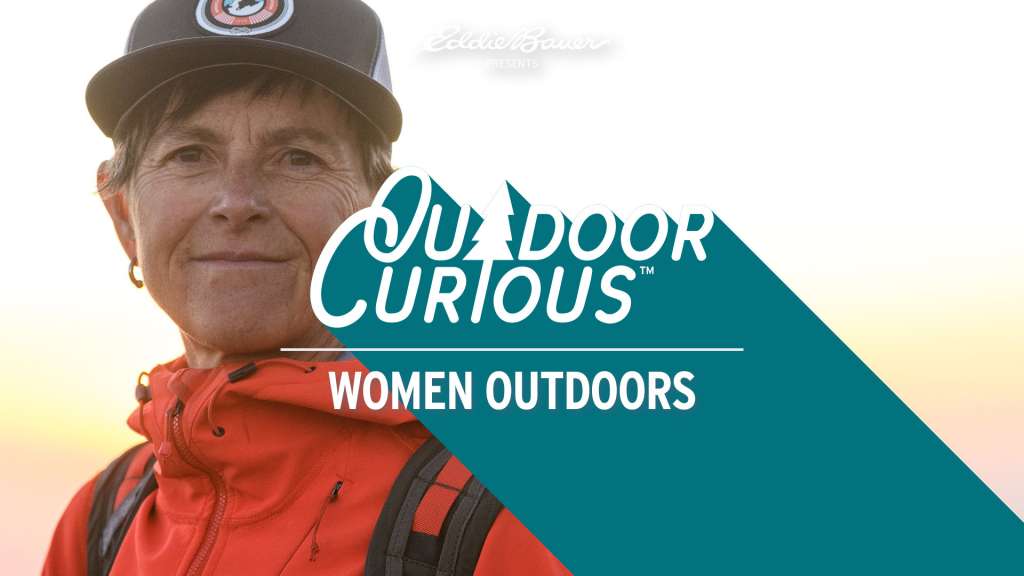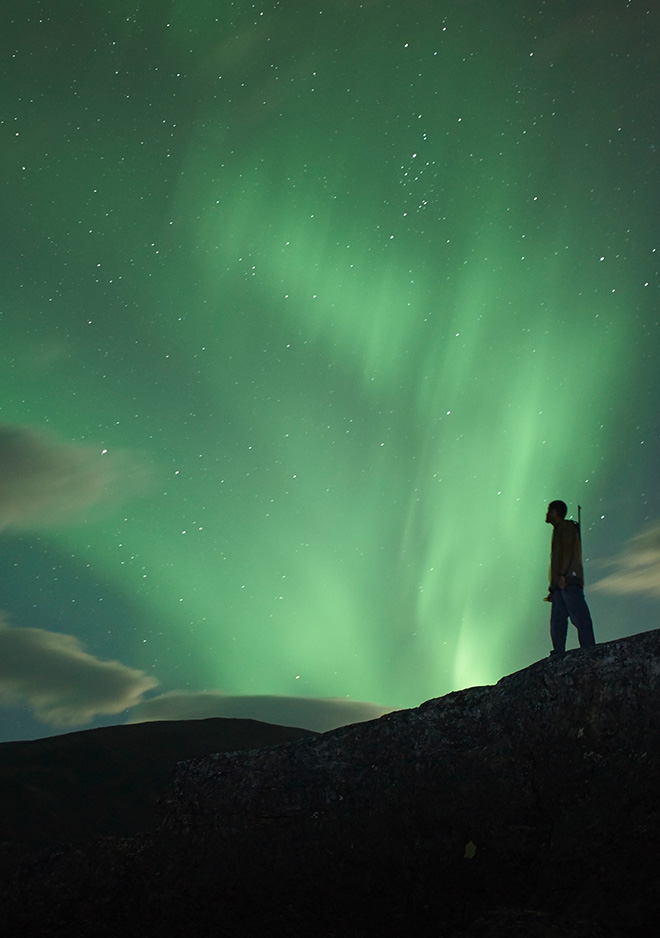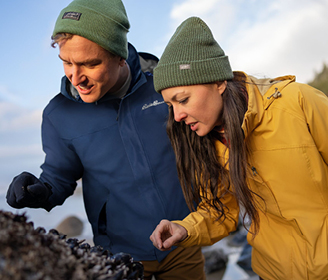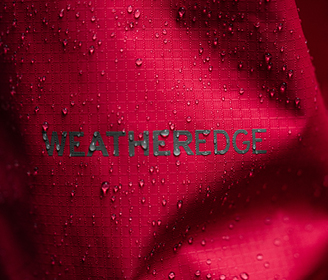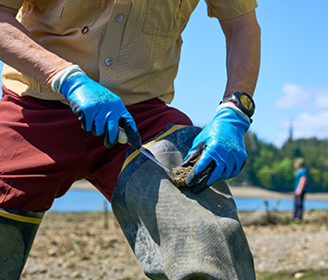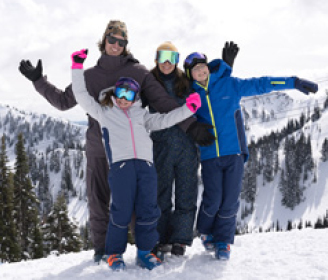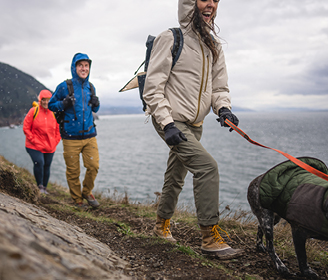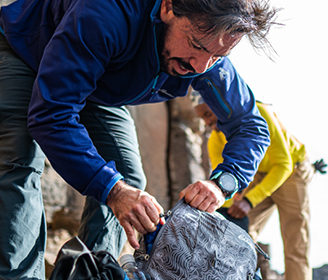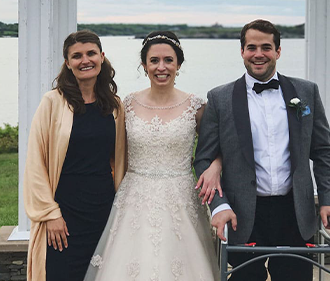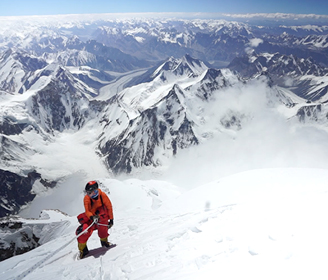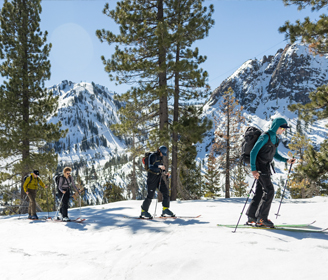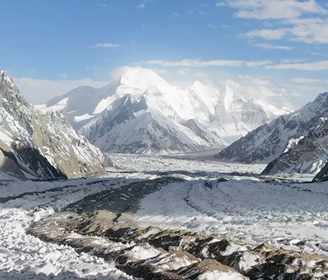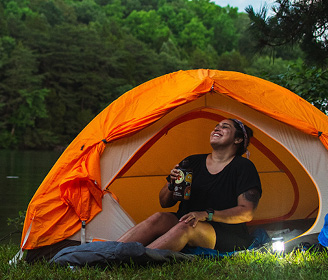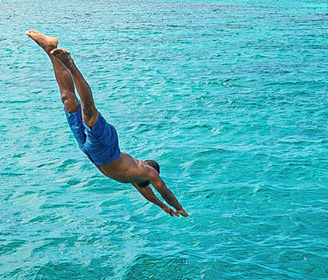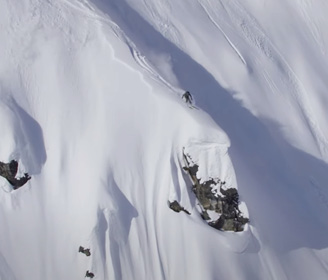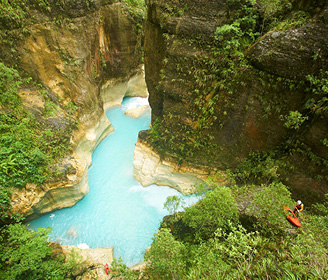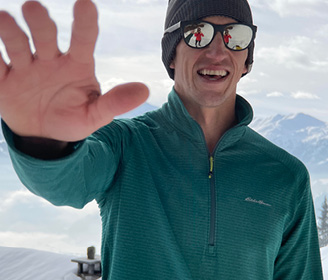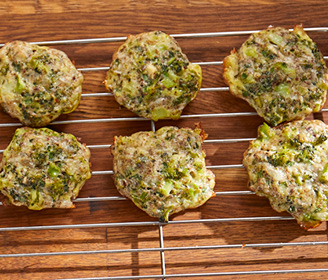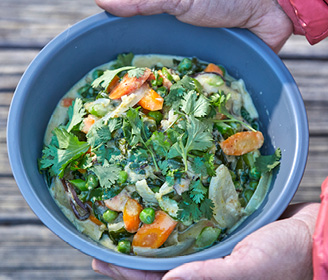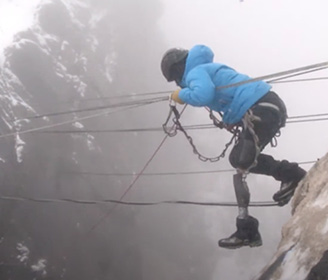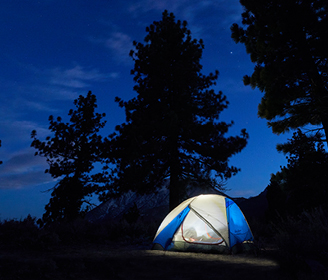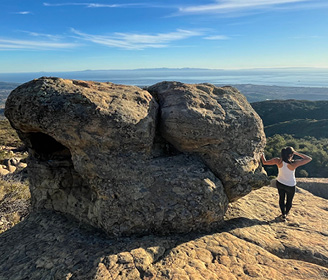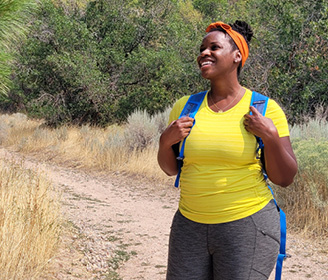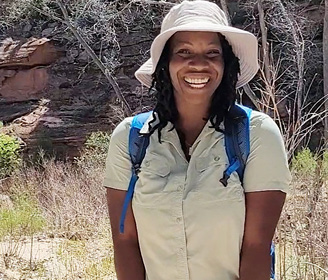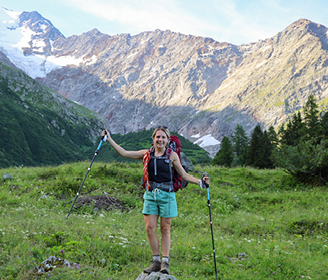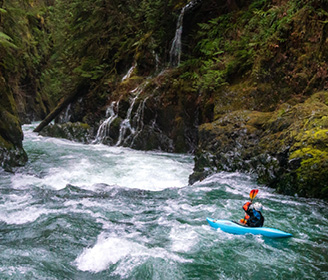Are you curious about some tips for traveling in the backcountry? Do you want to hear about some courses to take for safe adventures? Eddie Bauer alpine climbing guide Angela Hawse is one of one 11 female guides in the country to have achieved certification in all three AMGA disciplines– alpine, rock, and ski. She has lead high altitude expeditions all over the world, including all-women expeditions, and she’s here to answer the internet’s most asked questions about experiencing the outdoors as a woman.
00:32 – Are there resources for women’s groups in the outdoors?
There sure are and they’re great ways to get involved in the outdoors especially if you’re a beginner, is getting out with a group of women. There’s a number of different ways to find them but Google’s gonna be your best option. The group I used to work with, Chicks Climbing and Skiing, is now known as IRIS and they’re crushing away with everything from beginner level climbing to high end lead climbing. Babes in the Back Country are very active around the country and they also teach all women’s avalanche courses. Most activities that you can do in the outdoors, if you do a little bit of searching and detective work especially working with your local retailers, you can find women’s focus groups based on the activity.
01:22 – Is it safe to recreate as a woman alone outdoors?
Really it depends on where you are in the outdoors doing that. I feel absolutely comfortable going out by myself doing just about anything. What could you do to increase your safety as a woman traveling alone in the outdoors? Well, if you’re in a place where you could have a dog, I think that could detract a lot of problems. You could carry mace. I almost always have ski poles, not to defend myself but they could be used and oftentimes being in popular areas can make it make it feel safer because there’s more people around if something would happen.
02:03 – What are some must haves for women to take outdoors?
I would consider must haves, my cell phone, some type of protection from the elements, even like on a day where there’s a, you know, it’s a Bluebird or a good forecast with very little chance of rain, I might still have a rain jacket in the bottom of my backpack. I always have some type of protective eyewear. So I’m gonna have like my sunglasses, goggles if I’m going out in a winter environment, sunscreen, food, enough water for the day. I always consider water being more important than food. A basic first aid kit, more so something, you know, if I get a blister that I can put on just to help pad that, a map of where I’m going, it’s a good thing to have.
02:51 – How is gear clothing designed specifically for women?
It’s been a real joy to work with the Eddie Bauer design team and the other female guides and athletes and leaders on the team because we can sit at a table and we all have different opinions and we all kind of represent different needs and different sizes and shapes and that all results in a real good solid variety of things for women to choose from. We have some, you know, great backpacks that have been designed with women’s specific needs, with hip belts that are more specific to women. Sleeping bags have been considered with women’s needs. And it’s nice also not only to have functional equipment when you’re out there, but to look good.
03:40 – How are you expanding access to women especially those of underrepresented identities?
I am fortunate to be the President of the American Mountain Guides Association. We work on diversity, equity and inclusivity with all of our programs and we have a number of initiatives, some that are supported by Eddie Bauer that help provide sponsorship dollars and support for affinity programs which are entry level guide programs for people in marginalized communities and women to be together in a group to start their guide level training. I work with Scarpa on their athlete mentorship program. Eddie Bauer, in particular, is expanding access to women in the outdoors in a number of ways, certainly having representation on the guide and athlete team with more women. Eddie Bauer has a Be the Change committee that I’ve been involved with that is increasing opportunities for corporate and retail employees to have more opportunities to get into leadership roles and to address some of the issues of inclusivity and representing more marginalized populations in the outdoors. There’s a lot of really exciting work going on out there and it’s a really exciting time to see so much attention being paid to something that really matters.
05:03 – One of my fears that keeps me from going to the mountain in the winter is driving in the snow and dealing with getting snowed in at a lot. Any tips for dealing with snow and cars as a lady?
Couple things that I do specifically are I make sure that my car has a winter kit. What I mean by winter kit would be, I have a really good snow shovel that I could dig myself out if I need to. I always have a sleeping bag in there and a down parka then gloves. It’s really important to have some extra gloves. And I just put all this into one of my duffle bags that sits behind the driver’s seat. It’s a good idea to have a flashlight, water’s probably gonna freeze. So if I know I’m traveling in a storm or there’s a possibility that I might get snowed in somewhere, I always like make a Thermos of hot water ahead of time and I carry that with me. And it’s likely if I’m stuck, that other people are also stuck. So these things often become a group effort where we can help one another out. They’re legitimate concerns but I think you can prepare yourself for the worst, you know, just try to focus on your timing so you don’t get stuck out and you don’t have to use those things.
06:17 – Who are some of your role models?
I have a lot of role models. I’ll try to condense it down to a few. Ruth Bader Ginsburg, Rosa Parks, Greta Thunberg and Mikaela Shiffrin and oh yeah, one more, Amelia Earhart. She was such an inspiration and a woman ahead of her time in a male-dominated world, just leading the way. So yeah, those are my role models.
06:42 – How do you manage tampons and pads when you’re outdoors?
Great question. I like to have a lot of bags, like Ziploc bags. I have a nice little pouch that I carry ’em all in with little zipper that’s cute and I like to have both tampons and pads. And then I also carry a couple of spare Ziploc bags that I can put my used tampons or pads in. I would, you would never wanna like leave those out there because those are not going to decompose. It’s pretty easy to manage. It’s not as easy as being at home but it’s certainly should never detract you from getting out there.
07:20 – What are some basic classes you might take for safety in the outdoors?
First aid, a basic first aid class. CPR is also another one of those things that could easily save someone’s life if you know how to do it. Navigation classes are also really excellent. That’s something that I would consider a really critical skill for people that wanna spend more time outside. REI teaches a lot of those. Local guides will often teach navigation courses. It’s just really interesting and important to know how to read a map. You might take a self defense class and then certainly if you’re a backcountry user in the winter environment, avalanche courses are a must.
08:03 – How long did it take you to earn all those qualifications? How old were you when you started?
I was probably 22, 23 years old, when I took my first first aid courses. It wasn’t until I was 29 that I took my first American Mountain Guides Alpine Guide course. You’re never too old to start.
08:25 – Are there tips for going to the bathroom outdoors?
Always find a nice place that you feel is private that you can do your business without others looking on. If you need to poop, then the most important thing is that you’re packing out your human waste. So there’s two things that we can do. One is use like a Wag Bag or a Restop. You can certainly buy ’em at outdoor stores and it’s a full kit inside this little bag and it’s got toilet paper. It’s got hand sanitizer and it’s got a method that you can like tie it up nice and secure and pack it out. Some places it’s appropriate to bury your human waste. And it’s just important that you’re familiar with that zone. The leave no trace website has all kinds of great information on human waste and how to manage that correctly. Also, another way that you can be even more discreet in the outdoors is to have an anatomically shaped pee funnel. What I like them best for is camping overnight. Especially if it’s cold, I can have a pee bottle which is just an old water bottle, and I can pee in my tent instead of having to get up and go outdoors. There’s also like packable towels that you can take out that you can rinse off, that kind of help you keep good hygiene outdoors. So there’s all kinds of products out there. It’s just a matter of finding what works best for you.
10:00 – What are some tips/advice you have for women wanting to solo travel in the back country?
Get out and do it. That’s my best advice. Don’t talk yourself out of it. Your head’s gonna come up with all kinds of stories why you shouldn’t, but if you ever thought that you should, then just do it because you’ll be so glad that you did. Have with you what you need to feel safe. You know, some ski poles, maybe if you’re in a place where you have concerns, bring some mace. Certainly if you’re in bear country a can of bear spray is a good thing to take and you can also, you know, that’s gonna deter any kind predator is a can of bear spray. Don’t feel like you have to fill the space with reading a book or having things that occupy your attention you know. That’s what we wanna get out there when we’re by ourselves to do is just experience being out in the mountains or being out in nature without all the things, all the distractions, the cell phones, all these things that we have. It makes it so much easier and more enjoyable when we’re not carrying the kitchen sink in our back to get from point A to point B.
11:11 – What do you want the future of women adventure to look like?
I’m a nature lover and for me, it’s the future of adventure is nature focused not me focused. And it’s focused on the beauty of the natural world of the wonders of the planet and the natural things that actually we need to sustain us and more focused on the adventure of learning and the adventure of curiosity than the more traditional focus of conquest and how nature and mountains and exploration has kind of evolved from. And I think that we’re going back to that but I think having more women in the space and more representation from marginalized communities certainly is going to help us appreciate some of those finer qualities of having experiences outside.
12:10 – Do women have athletic advantages in outdoor activities?
Yes, we have advantages in that we are often nimble, flexible, pretty resilient. Oftentimes we have a very different way of problem solving. We have a very determined ability to be really good at what we’re at, whatever we set our minds to. I think the fact that women don’t have as much strength as men do, enables us to use our bodies in different ways specifically for rock climbing. I think women bring a lot of grace and movement and refined balance skills that aren’t the standard like overcoming problems with brute strength but with prowess and grace.
12:56 – What if I’m feeling intimidated about not being able to keep up with a group?
That’s a super common feeling amongst women. Any group only moves as fast as their slowest person and that’s gotta be someone. There’s this imposter syndrome that we all feel that we’re not enough. We’re not fast enough. We’re not fit enough. It should never prevent you from getting out and doing something.
13:25 – What if I’ve never considered myself to be outdoorsy?
I don’t think that you need to think you’re outdoorsy in order to like have an outdoor experience by any means. You know, if you haven’t spent a lot of time in the outdoors, it shouldn’t stop you from getting out and experiencing what it’s like to be outdoorsy because the first time you get outdoors and you do something outdoorsy, there you are, you’re outdoorsy. Certainly as we’ve seen more fashion injected into the outdoor industry, there’s tons of technical products that you can wear that totally represent who you are and how you wanna appear in the space. And, you know, if you’re more of an urban creature, there’s all kinds of awesome technical urban wear that translates beautifully to being outdoors.
14:17 – What are the mental health wellness benefits to getting outdoors?
They’re invaluable. These benefits that we get in the outdoors they translate for days, weeks, lifetimes. They help us when we get into these cycles of stress and hardship that daily life can bring. And it also helps us build that confidence to go out and do it more and that also just translates so strongly into everything we do in life.
14:50 – Why is it important for women to challenge themselves to do new things, break boundaries outdoors?
For me, it’s important because it’s what I love to do and it’s what fuels me and it’s what I’m passionate about. The more I do, the more I wanna do, and the more I have moments where I push myself and I try a little harder, it always gives me a little insight into the potential that I have that I still haven’t realized.
15:19 – How did you get into guiding? I’m interested in guiding, but don’t know where to start.
That’s a great question. I got into guiding because I love people and I love the mountains. Guiding is all about the guide being competent and comfortable in the terrain and that’s our number one risk management strategy is being able to move well in the terrain and being fit in the terrain and being adaptable and quick to think on our feet. And without a lot of personal experience, it’s not a good idea to be charged with the safety of others. So before you even get into guiding, you wanna get out there and just have a lot of fun doing it yourself.
16:04 – What are some tips for training to build up to a bigger endeavor?
I think the most important thing is that you’re doing the movement that’s gonna be required of the activity. So if it’s a winter environment, you’re gonna have to mimic being out in the cold. If it’s a hot weather environment, you’re gonna have to acclimatize to the heat. It’s gonna be very dependent on the activity and can’t say enough about hiring a coach to help you get into a position to achieve some of these goals.
16:35 – How to get in the outdoors if you live in an urban setting?
parks are a great way to just start experiencing the outdoors. And then looking for groups that are doing activities farther afield from your urban environment. You know, REI or your other local outdoor retailers can give you some good tips. You can always find a guide to go out and do something like hiking or skiing or climbing, learning these things. Rock climbing gyms are a great way to meet other people that are doing things in the outdoors.
17:10 – What boots are best for playing in this snow such as sledding with kids?
For an outdoor, a snowshoe, I would want something that kind comes up to at least mid calf maybe even like right below my knee and for an activity like sledding where I’m not gonna be out all day I’m gonna be more interested in a boot that’s more water resistant rather than breathable. Doesn’t have a lot of laces, gonna shed snow, that’s gonna be comfortable.
17:44 – What’s a good way to get your family, kids, involved to make time and space to get outdoors?
It could be as simple as taking out a magnifying glass with you and looking for bugs, or, you know, just taking, making little rock collections outside, or, you know we don’t wanna take the rocks home, but you know it’s fun to like do little activities with kids out there that get ’em engaged and doing activities that inspire a lot of curiosity, that encourage your kids to go out and look for things and find things I think is a great way to encourage kids to get outside. Whatever the activity is, make sure that they’re set up to be comfortable, to be protected out there, and then just look for ways to make it fun.
18:30 – What are some things others can do in the community to make the outdoors more inviting, welcoming, safe for women to recreate?
I think the more that we can look at each other as humans rather than as, you know, putting us all in boxes and that we can adopt a respectful attitude and behavior towards others, then everywhere will be more inclusive.
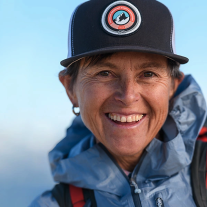
ANGELA HAWSE
Alpine Climbing Guide (AMGA/IFMGA)
Angela has been climbing, skiing and working full-time as a mountain guide for well over three decades. She’s one of the most experienced women guides in the industry, and one of only 11 female guides in the country to have achieved certification in all three AMGA disciplines of alpine, rock, and ski guiding.

